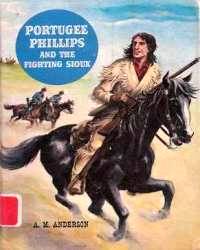The Fetterman Fight was a battle during Red Cloud's War on December 21, 1866, between the Lakota, Cheyenne, and Arapaho Indians and soldiers of the United States army. All 81 men under the command of Captain William J. Fetterman were killed by the Indians. It was, at the time, the worst military disaster ever suffered by the U.S. on the Great Plains. The battle led to an Indian victory in the war and the withdrawal of the United States from the war.
In June 1866, Colonel Henry B. Carrington advanced from Fort Laramie into the Powder River country, the hunting grounds of the Lakota, Northern Cheyenne, and Northern Arapaho. His objective was to protect emigrants traveling the Bozeman Trail. Carrington had 700 soldiers and 300 civilians under his command. He established three forts along the trail, including his headquarters at Fort Phil Kearny, near present day Buffalo, Wyoming. About 400 of the soldiers and most of the civilians were stationed at Fort Kearny.
Counting Fetterman and his men Carrington's casualties in less than six months at Fort Kearny were 96 soldiers and 58 civilians dead. He still had more than 300 soldiers inside the walls of Fort Kearny.
Carrington prepared for an attack on the fort that evening after the Fetterman fight, ordering all his men to stand watch, three to a porthole. All extra ammunition and explosives were deposited in a powder magazine ringed with wagons. If the Indians attacked, the ten women and children at the fort were ordered to get into the magazine. Soldiers were told that in the last extremity they were to retreat to the magazine. Carrington would then blow up the magazine to ensure that no whites remained alive to be captured by the Indians.
A civilian, John "Portugee" Philips," volunteered to carry a distress message to Fort Laramie. Carrington's message to General Cooke told of the Fetterman disaster and requested immediate reinforcements and repeating Spencer carbines. Carrington sent Phillips and another messenger, Philip Bailey, out that evening on the Fort's best remaining horses. Philips accomplished the 236 mile ride to Fort Laramie in four days. A blizzard began on December 22, and Philips rode through a foot of snow and below-zero temperatures. He never saw a single Indian during his ride. He arrived at Fort Laramie late in the evening on December 25 during a full-dress Christmas ball, and staggered, exhausted, into the party to deliver his message.


